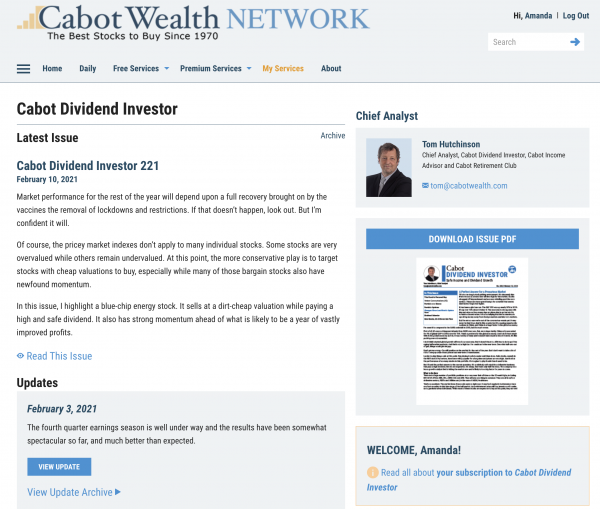
The revival of premium digital newsletters has unsurprisingly begun. Some of us have been expecting it for a while. We can see this re-emergence as major brands vie for position among the masses of existing publishers. For instance, Twitter recently acquired Revue, a newsletter publishing company similar to Substack, which we’ve written about before. As WNIP points out, “The news … is widely seen as Twitter’s first foray into long-form content and subscription revenue.”
In micro-publishing platforms like Substack and Revue, editorial newsletters can become premium newsletters. You can maintain two distinct lists, and opt free subscribers into paid subscriptions. Generally, the platform takes a cut of the revenue, but the service is free. When you think about how much it costs to send email these days, that incentive alone is intriguing.
Ultimately, it’s an opportunity for Twitter to become more relevant while developing a new revenue stream. Twitter has already served as a micropublishing platform since its inception, so why not go one step further? Especially when that step is towards more profitable publishing. We have long touted the value of website-based premium digital newsletters and the digital subscription model. After all, it is through this method that publishers have a long-term approach that can make the most money. Faisal Kalim sees it similarly. “This latest addition to Twitter can turn out to be a valuable new opportunity for publishers and journalists who use the platform to connect with readers. They can use the newsletter option to deepen engagement and monetize their content as well.”
[text_ad]
Perhaps more companies are beginning to realize the value in the subscription revenue model for long-form content, and that not everything has to be printed to have value. After all, who even buys or rents DVDs or Blu-Rays anymore? Not enough to keep Blockbuster in business, that’s for sure.
Kalim mentions that other major brands are not only ramping up the expansion of paid content, they are also investing more into the actual production of such content. “[Twitter’s] announcement comes within days of Forbes’ massive expansion of paid newsletters and Rolling Stone’s invitation to thought leaders to write for its website against a payment of $2,000.”
Clearly, Twitter is not the only company making moves of this magnitude, as Rolling Stone is paying handsomely for content from well-known names. Patch, the digital news company is also working with newsletters and websites, showing that hyperlocal news aims to capture a larger portion of subscribers as well. Kalim seemingly agrees, writing, “These developments are an affirmation of the resurgence of email newsletters in recent years and their potential to generate engagement, traffic and revenue.”
When major publishing brands like New York Times and Washington Post have more than 60 public newsletters each, you know there has to be a profitable reason behind it.
Special interest publishing is the backbone of premium content
We can’t talk about valuable premium content without talking about the folks who are doing it best, and always have: special-interest publishers. Special-interest publishing targets specific audiences who have common interests, like fishing, knitting, investing, gardening, etc. It’s more niche and nuanced than covering all aspects of a broad topic, and this is where the value lies. A special-interest niche allows for a deeper connection with a topic, and for thought-leaders to share their understanding of the topics.
Since we have mostly worked in the special-interest arena of digital publishing, I can tell you that it’s these smaller, niche publishers who have the firmest grasp on developing, delivering, and marketing premium content, including premium digital newsletters and magazines.
For the publishers we work with, free email newsletters are used to bringing content to audiences consistently and often work as an upsell to premium newsletters or magazines that add extra value.
To do this, the publisher must publish a mix of free and premium content. The free content is published to attract the masses, and then to convert them into premium members, usually with a metered paywall. As a subscriber to a digital product like a premium digital newsletter, the member can log in and view both sections of the website through one login and interface, but the premium content is organized and read like a magazine, digitally and with a table of contents.
For example, a subscriber to Cabot’s Dividend Investor advisory, which is a premium newsletter, is accessed much like the rest of the site, but when a subscriber logs in, they’re able to access the current issue, recent updates, past issues, and individual articles in the issue.
Premium digital newsletters and the connection between evergreen and timely content
To promote the newsletter above, along with the rest of their premium newsletters and their Pro membership that bundles them, Cabot Wealth Network publishes a free daily newsletter called Cabot Wealth Daily. Cabot Wealth Daily links to a mix of free and premium content. The newsletter leads with a free featured article, which can be read in its entirety in Cabot’s free portal.
As a subscriber to the newsletter, they also get a deep summary of the issue that links back to the website.
Much of the free content provides educational information on how to be a better investor. This information is targeted towards both beginner and experienced investors. We can see this informative approach as foundational evergreen content because much of the guidelines for investing successfully will not change much over time.
What does change over time are the recommended stock investments. This is where the premium newsletters become valuable because they present the most timely recommendations on worthy stock picks. And so Cabot uses their interrupter text ads between the free articles to talk about stock picks in each of their newsletters. They draw readers in with free content, then visually pull them in with an eye-catching piece of content like the one above, the stock pick that’s up 708% and climbing to convert free email subscribers into premium newsletter subscribers.
The balancing act of evergreen and timely content mixes well with the free and premium newsletter models. Teach the audience about the process for free, and then provide them with enhancements, added value, and timely content within premium digital newsletters.
What’s a good example you’ve seen like the one above? Share your thoughts in the comments.





